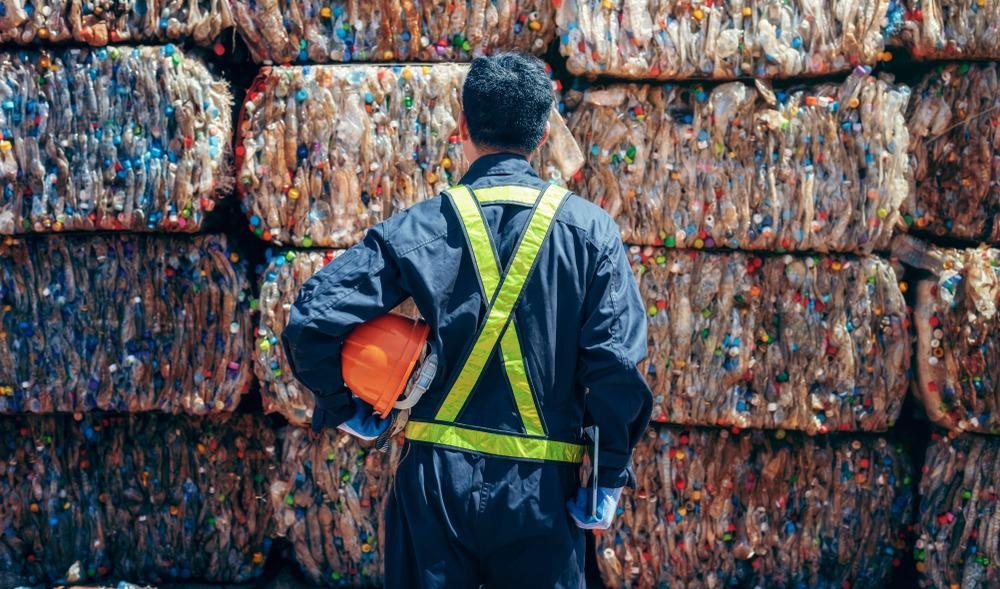Recycling often relies on mechanical sorting processes to separate the different materials found in waste, but this is an inaccurate, time-consuming, and costly solution. Optical technologies, including photonics, can be introduced to recycling to improve its efficiency and ultimately make it more sustainable, according to new research.

Image Credit: Chanchai phetdikhai/Shutterstock.com
How Optics can Help with Waste Management Demands
Recycling must improve due to increasing pressures on waste management from rising populations and increased industrialization around the globe. Optical technologies can significantly support this improvement by offering low-cost solutions to plastic sorting.
However, current optical technology-based solutions such as near-infrared spectroscopy have typically only focused on identifying a few selected types of mono-material in waste streams. This is due to market interest in recycling those specific materials.
But new research identifies progress in photonic sciences that (when combined with advanced data analysis techniques such as artificial intelligence or AI) can bridge practical challenges previously thought unassailable.
Classifying more materials and more complex materials such as plastics whose chemical composition has been altered due to deterioration in the elements is now believed to be possible.
The new research was conducted by scientists working for IRIS Technology Solutions in Barcelona, Spain, and academics at the Fraunhofer Institute for Process Engineering and Packaging in Freising, Germany. The team published its results in Waste Management & Research: The Journal for a Sustainable Circular Economy in March 2021.
The paper reviews the different techniques for employing photonics in recycling based on their main characteristics. The authors then discuss how suitable these techniques could be for identifying and monitoring multiple materials in waste streams simultaneously.
Multi-layered packaging, fiber-reinforced polymer composites, and black plastics used in the automotive industry are all scrutinized alongside these photonic recycling approaches.
The authors conclude the paper by presenting some commercial systems that can be applied by the recycling industry today.
General Strategies for Recycling with Photonic Technology
Molecular microscopy is generally employed to identify polymer compositions of investigated materials in recycling. This is a mono-material approach that identifies specific plastics that are valuable as second-life or recycled materials.
Atomic spectroscopy is also used in mono-material identification to find typical elements that indicate either: a specific polymer (CI for PVC, for example); a specific group of additives (Br for brominated flame retardants, for example); or specific metals that are applied in composite materials (Al in multi-layered packaging; or Ni, Cu, or Cr for metal-coated plastic composites, for example).
Using photonic technologies in sorting applications links up identification methods with decision-making at the sorting step. Positive sorting is applied in this sense: the material is identified as a target material and pulled from the sample. Negative sorting, on the other hand, removes non-target materials from the sorting stream. Both are photonic sorting approaches that are already being applied in the recycling industry.
Photonic Technology for Manual Sorting and Dismantling Processes
Handheld, portable spectrometers are available that can be used for larger plastic parts in manual sorting and dismantling activities. The worker holds the device, which informs them of the material composition of waste items and helps guide sorting or dismantling decisions.
This can help workers to identify valuable plastics from waste, especially as a plastic’s chemical composition can change during deterioration so that packaging information may not be a reliable informer of the material’s second-life value.
Applications in Automated Recycling Processes
Spectroscopy methods can also be applied to automated sorting processes at recycling facilities. In these operations, separation is achieved with air nozzles that blow out particles from the feed stream. The in-feed material has previously been sorted through mechanical size reduction processes and is provided to the sorter on conveyor belts.
Photonic spectrometers can be used to detect materials for positive or negative sorting, which is achieved automatically with air nozzles.
References and Further Reading
Araujo-Andrade, C., et al. (2021). Review on the photonic techniques suitable for automatic monitoring of the composition of multi-materials wastes in view of their posterior recycling. Waste Management & Research: The Journal for a Sustainable Circular Economy. Available at: https://doi.org/10.1177/0734242X21997908
Disclaimer: The views expressed here are those of the author expressed in their private capacity and do not necessarily represent the views of AZoM.com Limited T/A AZoNetwork the owner and operator of this website. This disclaimer forms part of the Terms and conditions of use of this website.